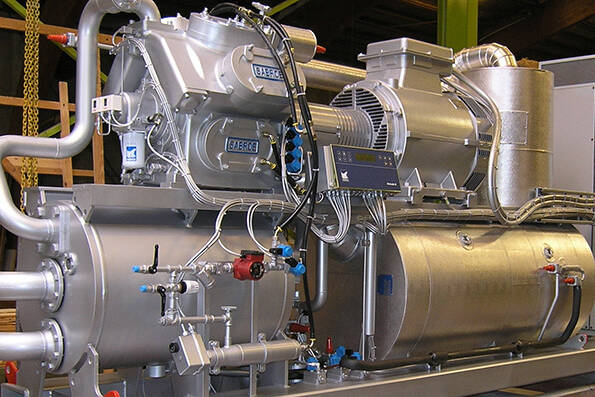Air Conditioning With Ammonia - Fact Or Fiction?
At a Glance
- Cooling capacity 1200 kW
- Ammonia charge 2×25 kg
- Annual energy saving around 50%
- First NH3 based air conditioning system in a public administration building in Australia
- Pay-back approximately 8 years based on energy savings alone
- Provision of hot water via desuperheaters fitted in the NH3 compressor discharge lines
- New system replaced two existing R22 based air conditioning systems

First Ammonia Based Air Conditioning System in a Public Administration Building in Australia
Owners of existing R22 based systems who wish to future proof their installations should consider switching to a natural refrigerant. Logan City Council south of Brisbane did exactly that, we converted the old fashioned existing air cooled R22 based air conditioning system to a new water cooled NH3 based system. Not only did this new system reduce Logan City Council’s annual energy consumption by around 50%; it also eliminated any commercial and environmental risks associated with future releases of chemical refrigerants.
The Logan City Council project is an excellent example of a succesful retrofit where the existing engine room infrastructure only had to be modified slightly in order to be able to accommodate two new ultra-low NH3 charge liquid chillers. The new water chillers have a combined capacity of 1200 kW. They are state of the art with built-in speed control, desuperheaters for heat recovery, less than 25 kg NH3 charge per unit and computerized control and monitoring systems.
Computer modeling determined that the NH3 charges are so low than in the event of a major refrigerant release, the NH3 concentration in the engine room will be unable to reach 20% of the lower explosive level (LEL). This means that an existing essential services motor control centre could be left in what later became the NH3 chiller engine room.
The new NH3 based system replaced two existing R22 based plants. The performance of the new system has exceeded expectations to such an extent that the chilled water supply temperature set point to the various air handling units had to be increased during commissioning. This, of course, improves energy efficiency further. The new water chillers feature an IPLV of close to 10; a vast improvement on the old R22 system with a coefficient of performance (COP) of around 2.8.
